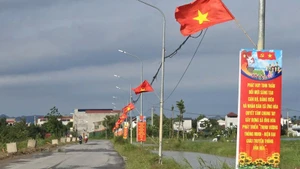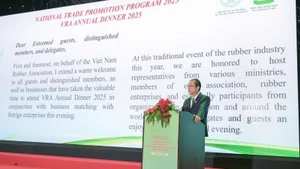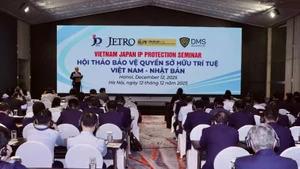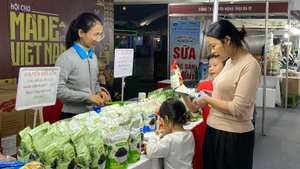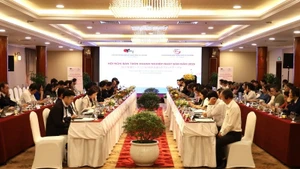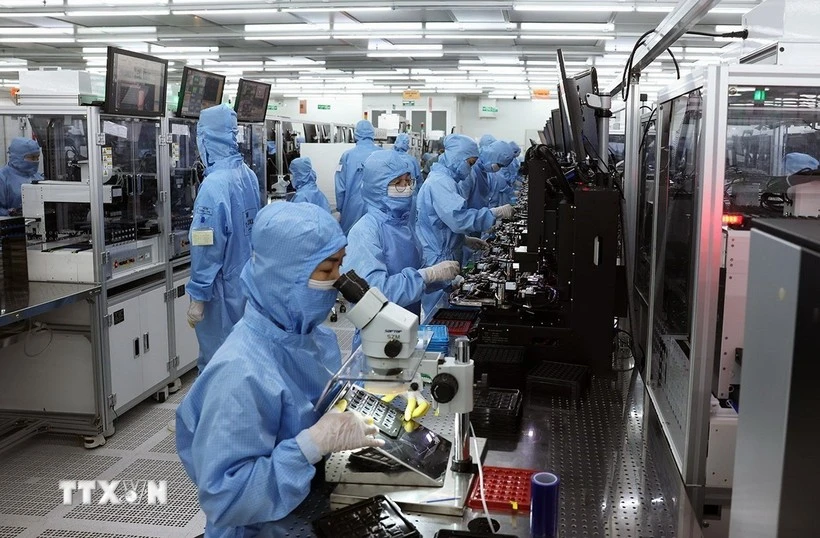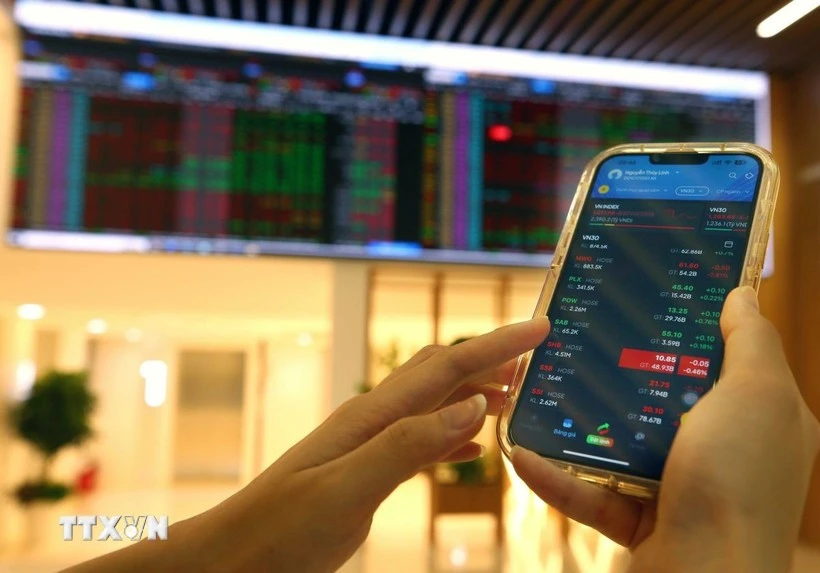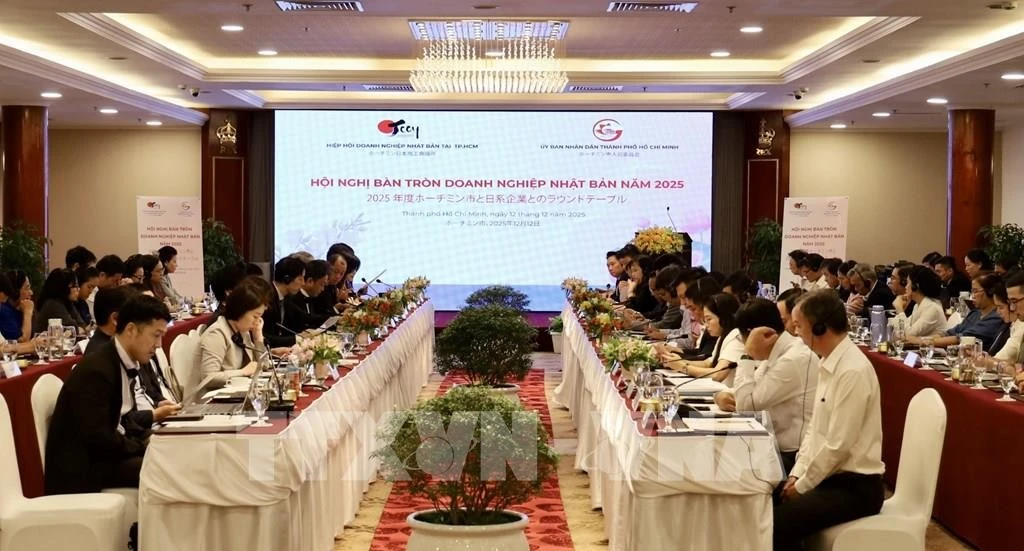Numerous favourable factors continue to support Viet Nam’s garment industry in the period ahead. Therefore, enterprises need to capitalise on these opportunities to soon realise the export target of 47-48 billion USD.
A rapid campaign
Nguyen Ngoc Binh, General Director of Hoa Tho Textile and Garment Corporation, reported that the US announcement on April 3 of a 46% reciprocal tariff on certain Vietnamese goods had an immediate negative impact, with some customers cancelling or suspending orders, leading to a slowdown in production.
However, following the April 10 announcement of a 90-day pause, the market quickly rebounded, with customers placing urgent short-term delivery requests. In response, the company had to adjust its production plans on a daily basis.
Currently, the company is mobilising all available resources to ramp up production and fulfil orders before July to deliver the goods early and thereby gradually meet revenue and profit targets.
In May 2025, the garment industry continued to witness positive signs, with export value hitting 3.84 billion USD, up 6% year-on-year. This marked the highest export figure ever recorded for May, even surpassing May 2022, which saw a surge due to post-coronavirus overbuying. The sector’s cumulative export value thus reached 17.8 billion USD, up 10% compared to the same period in 2024.
The US remained the largest export market over the past five months, with turnover reaching 6.97 billion USD (up 17%), followed by the European Union at 1.86 billion USD (up 15%) and Japan at 1.83 billion USD (up 11%).
According to Le Tien Truong, Chairman of the Board of Directors of the Viet Nam National Textile and Garment Group (Vinatex), despite constant market fluctuations, the group has retained its growth momentum since the second half of 2024, thanks to proactive and flexible management.
To cope with uncertainties in tariff policy, Vinatex has launched a 90-day campaign across its subsidiaries, effectively utilising existing orders with great effort to complete second-quarter orders by July 5.
The group also assigned the garment production and business units to review the supply chain for materials and accessories, prioritising in-house fabrics where quality standards are met.
Moreover, the group is supporting its members in identifying product categories and markets most vulnerable to new tariff policies, serving as a foundation for negotiations with customers and for formulating appropriate strategies in the coming time.
In the yarn sector, the market remains subdued but has improved over 2024. The sector reported profits, though modest, in the first half of the year. Several units have recorded stable profits for eight consecutive months, including Vinatex Phu Hung, Phu Bai Yarn, and the yarn division of Hoa Tho Corporation.
Vinatex’s consolidated revenue for the past six months stood at 9 trillion VND (344.8 million USD), equivalent to 49% of the annual plan, while profit reached nearly 556 billion VND (21.3 million USD), equivalent to 61% of the yearly target.
“With the trend of larger and longer-term orders, and acceptable pricing levels in the past six months, enterprises have been able to plan production proactively, leading to high efficiency,” Truong affirmed.
“Normally, the first half of the year contributes only 40% of the annual profit, due to extended holidays and a predominance of low-value summer orders. However, this year is quite exceptional when the first-half results are comparable to those typically achieved in the second half,” he added.
Creating distinct value
Commenting on market prospects for the remainder of the year, Truong noted that enterprises have secured enough orders to maintain production through August and September, and are actively engaged in negotiations for subsequent months.
Both customers and manufacturers have agreed to appropriate pricing when a final ruling on export tariffs to the US is made. Once the final decision is made, both parties will reconvene to negotiate on the final prices.
In addition, with market volatility, especially geopolitical tensions and trade wars in some countries, enterprises must remain vigilant and respond flexibly so as to ramp up production and maximise operational efficiency.
Speaking further on the challenges facing his company, Nguyen Ngoc Binh stated that new US orders for August onwards have been slow to materialise, with some halted altogether.
The main reason, he explained, is that customers need time to reassess consumption, inventory levels and the effects of the new tariff policy. Many have reduced order volumes or demanded steep price cuts. Some have redirected orders to factories in Bangladesh or kept production in China.
Nguyen Thi Phuong Thao, Executive Director of Garment 10 Corporation (Garco 10), added that the market outlook for the final months of the year remains bleak, particularly for shirt products.
Consumer demand is projected to fall by 10-20% in the third and fourth quarters, due to earlier stockpiling prompted by fears of price hikes.
Given market uncertainties, garment makers need to adopt flexible coping strategies. Garco 10 is currently diversifying its supply of raw materials by connecting with other members of the group, as well as enterprises in India and Taiwan (China).
At the same time, the company is actively working to diversify product designs, markets and customers, thereby boosting production with the aim of surpassing the set target.

